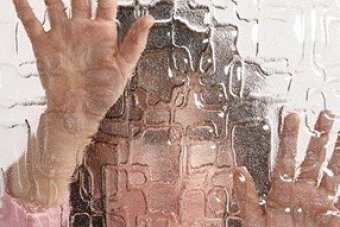The way autism is diagnosed has led to an apparent tripling in cases in recent years that does not reflect reality, researchers say.
Rather, more youths with intellectual or developmental disabilities are being reclassified as autistic, the United States-based study published in American Journal of Medical Genetics found.
University of Western Australia Telethon Kids Institute’s Andrew Whitehouse said the trend was “almost certainly the same in Australia”.
The prevalence of autism in the US was just one in 5,000 in 1975.
It leapt to one in 150 in 2002, and reached one in 68 in 2012, according to the US Centres for Disease Control and Prevention.
“This new research provides the first direct evidence that much of the increase may be attributable merely to a reclassification of individuals with related neurological disorders rather than to an actual increase in the rate of new cases of autism,” the study authors wrote.
Penn State University scientists found “no overall increase in the number of students enrolled in special education”.
“They also found that the increase in students diagnosed with autism was offset by a nearly equal decrease in students diagnosed with other intellectual disabilities that often co-occur with autism.”
Therefore, what may appear to be an epidemic of autism is more likely the result of shifting patterns of diagnosis over time.
Autism in Australia ‘swallowing up other diagnoses’
Australian Bureau of Statistics (ABS) data from 2012 showed an estimated 115,400 (0.5 per cent) of Australians had autism.
That was a 79 per cent increase from 2009.
Mr Whitehouse said there was no hard evidence to suggest why autism rates were increasing, but certainly “autism is swallowing up other diagnoses”.
“We don’t have hard data in Australia but there’s a strong likelihood that is what is happening in the US is happening here,” he said.
“We use the same diagnostic standards as in the UK and the US so trends we observe here are almost certainly the same.”
The only real evidence we have is one in 100 children are diagnosed.
Amaze chief executive Fiona Sharkey
Mr Whitehouse has studied “diagnostic substitution” finding that many children who were diagnosed with severe language disorders in the 1980s and 1990s displayed behaviours that would be regarded as meriting a diagnosis of autism spectrum disorder according to contemporary criteria.
“This appears to be a direct result of changing diagnostic criteria from DSM-III [Diagnostics and Statistics Manual of Mental Disorders] through to DSM-IIIR and DSM-IV,” he wrote in a 2008 paper.
The 2012 ABS report also noted changes DSM took place in 1987 and again in 1994.
“The changes … resulted in increased amounts of specific detail that should be considered in the diagnosis,” it said.
“But at the same time, the number of criteria that had to be met to receive a diagnosis were also reduced.”
Amaze (previously Autism Victoria) chief executive Fiona Sharkey agreed there was a lack of hard evidence to say whether autism cases in Australia were actually increasing.
“There isn’t evidence to say either way [but] we can speculate in some sense about the increase in diagnosis, the greater awareness and more services … all that would add up to increased diagnosis,” she told the ABC.
“The only real evidence we have is one in 100 children are diagnosed.”
The study published in American Journal of Medical Genetics also found because autism was a complicated condition with many degrees of severity, it could overlap with other related disorders.
“The high rate of co-occurrence of other intellectual disabilities with autism, which leads to diagnostic reclassification, is likely due to shared genetic factors in many neurodevelopmental disorders,” lead researcher Santhosh Girirajan said.
ABC/AFP

